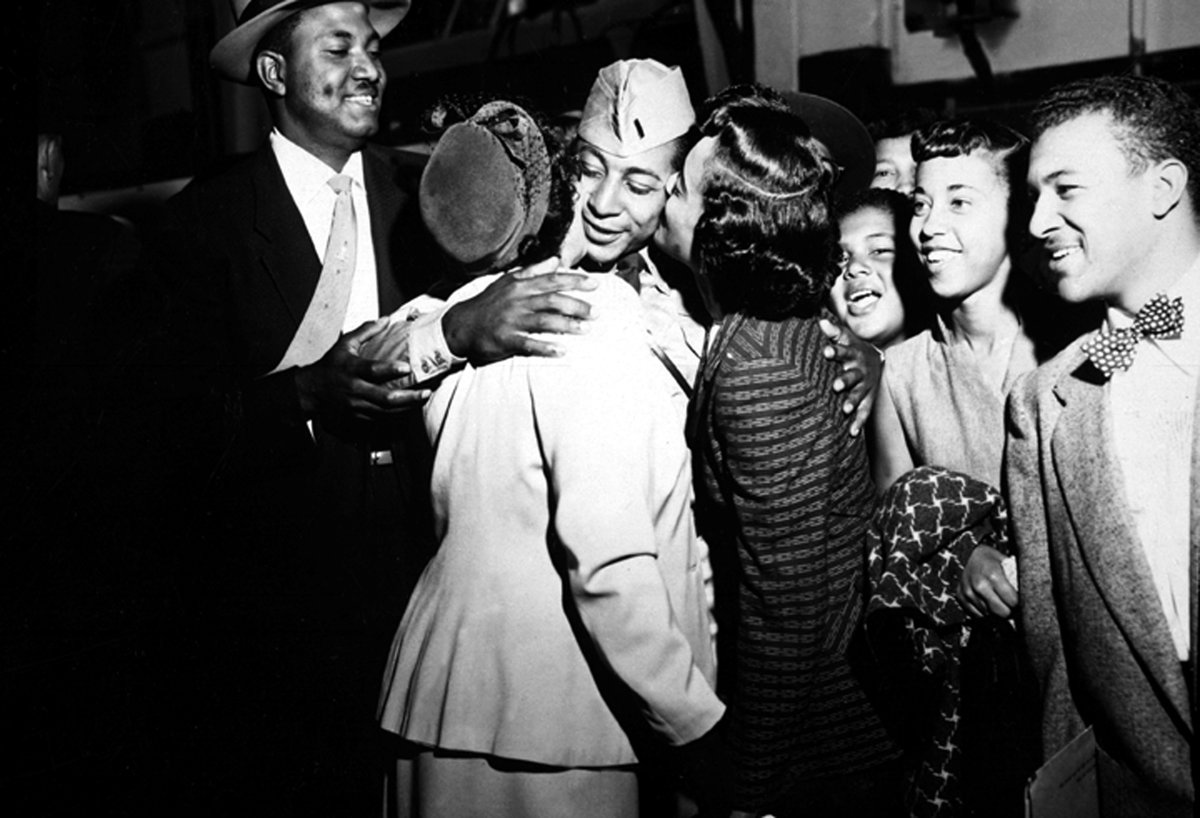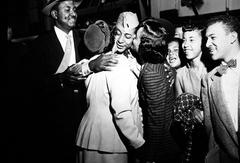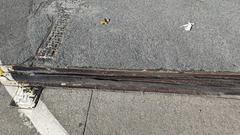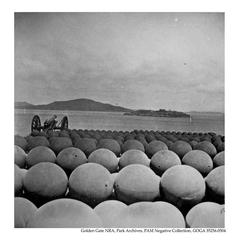
Fort Mason San Francisco: Visiting Hours, Tickets, and Complete Travel Guide
Date: 14/06/2025
Introduction
Fort Mason, set along San Francisco’s northern waterfront, is a remarkable destination blending deep military heritage with a thriving arts scene, scenic open spaces, and vibrant cultural programming. Originally a strategic military site, Fort Mason has evolved into a beloved public hub, offering sweeping views of the Golden Gate Bridge, immersive arts experiences, and family-friendly recreation. This comprehensive guide provides all essential details for visitors, including historical context, visiting hours, ticket information, accessibility, travel tips, and nearby attractions.
For in-depth historical background and the latest visitor information, see NPS.gov, Fort Mason Center, and Hoodline.
Table of Contents
- Historical Overview
- Fort Mason Today
- Key Features and Landmarks
- Arts, Culture, and Events
- Outdoor Recreation and Scenic Views
- Guided Tours and Educational Programs
- Nearby Attractions
- Frequently Asked Questions (FAQs)
- Plan Your Visit and Stay Connected
- References
Historical Overview
Early Origins and Military Establishment
Fort Mason’s site, originally inhabited by the Ohlone people, was recognized for its strategic value by Spanish colonists in the late 18th century. In 1851, the U.S. military established a reservation at Point San Jose to defend San Francisco’s harbor. The fort was officially named Fort Mason in 1882, after Colonel Richard Barnes Mason. The military built barracks, officers’ quarters, and batteries, reinforcing the location’s role as a coastal stronghold (NPS.gov; Hoodline).
Expansion and the Port of Embarkation Era
The 20th century marked Fort Mason’s transformation into a logistics powerhouse. After the 1906 earthquake, it provided critical relief functions. During World War I and II, Lower Fort Mason’s warehouses and piers became the headquarters for the San Francisco Port of Embarkation—one of the nation’s most vital military shipping centers. Between 1941 and 1945, over 1.6 million troops and 23 million tons of cargo passed through Fort Mason’s piers, supporting the Pacific theater (NPS.gov; citybop.com; fortmason.org).
Postwar Transition and Civilian Rebirth
After its decommissioning in 1963, Fort Mason’s military role faded, but its historic infrastructure remained. In 1972, the site became part of the Golden Gate National Recreation Area (GGNRA), repurposed as a cultural and recreational destination (Hoodline; fortmason.org). The adaptive reuse of its historic buildings set a precedent for preserving and revitalizing military sites nationwide.
Fort Mason Today
Visiting Hours and Ticket Information
- Outdoor Areas: Open daily from 6:00 a.m. to 10:00 p.m.
- Fort Mason Center for Arts & Culture (FMCAC): Generally open 10:00 a.m. to 6:00 p.m., with venue hours varying by event.
- Admission: Access to outdoor spaces and public areas is free. Some exhibitions, theater performances, and festivals require tickets—check the official FMCAC events calendar for details (Fort Mason Center).
- Guided Tours: Offered periodically by the National Park Service and FMCAC; advance booking is recommended for private or group tours (SF City Guides).
Accessibility and Amenities
- Most public areas and venues are wheelchair accessible, with ramps and elevators throughout the site.
- Accessible parking is available near main entrances.
- Restrooms, water fountains, and seating areas are located throughout Upper and Lower Fort Mason.
Getting There and Parking
- By Public Transit: Served by Muni bus lines 30, 45, 47, and F Market streetcar.
- By Car: Paid parking available on-site (rates start at $3/hour, higher during events). Street parking is limited.
- By Bike or Foot: Bike racks are plentiful; the Bay Trail connects Fort Mason to Fisherman’s Wharf and the Marina (SF Travel).
Facilities and Visitor Services
- Visitor information is available at Building 201 (Upper Fort Mason), with maps, brochures, and event updates.
- Cafés, such as Goody Café, and picnic areas are available.
- Farmers’ markets and food truck events are held regularly (SF City Guides).
Key Features and Landmarks
Upper and Lower Fort Mason
- Upper Fort Mason: Set atop Black Point headland, features historic officers’ quarters, the Great Meadow, and panoramic views. Headquarters for the GGNRA.
- Lower Fort Mason (FMCAC): Waterfront area housing repurposed piers and warehouses, home to the arts center, galleries, event venues, and restaurants (Wikipedia; Fort Mason Center).
Great Meadow, Black Point Battery, and Historic Piers
- Great Meadow: Expansive lawn ideal for picnics and recreation, with iconic views of the Golden Gate Bridge (NPS Place).
- Black Point Battery: Civil War-era fortification accessible via trails from Upper Fort Mason (NPS Map).
- Historic Piers: Piers 1, 2, and 3 now serve as venues for exhibitions, events, and the Off the Grid food market (SF Travel).
Arts, Culture, and Events
Fort Mason Center for Arts & Culture
- Gallery 308: Hosts rotating visual art exhibitions.
- Cowell Theater: Venue for theater, music, and dance performances.
- San Francisco Art Institute Graduate Center: Features exhibitions and open studios.
- Museums: Museo Italo Americano, Mexican Museum, and others highlight the city’s multicultural heritage (fortmason.org; secretsanfrancisco.com).
- Event Programming: Includes the San Francisco International Arts Festival, craft fairs, film screenings, and literary events.
Farmers’ Markets and Food Experiences
- Farmers’ Market: Held regularly on weekends, with fresh Bay Area produce.
- Food Truck Gatherings: Popular events with a variety of gourmet options (SF City Guides).
Special Events and Festivals
- Seasonal art fairs, craft markets, outdoor film nights, and citywide festivals fill the annual calendar. See the FMCAC events page for updates.
Outdoor Recreation and Scenic Views
- Walking and Biking: The Bay Trail offers gentle, scenic routes through Fort Mason, connecting to Crissy Field and Fisherman’s Wharf.
- Picnicking and Relaxation: The Great Meadow and open lawns are perfect for gatherings and enjoying views of Alcatraz, the Golden Gate, and Marin Headlands (citybop.com).
- Photography: Iconic vantage points abound, especially at sunrise and sunset.
Guided Tours and Educational Programs
- Public Tours: Led by knowledgeable guides, exploring Fort Mason’s military, architectural, and cultural legacy.
- Private Tours: Bookable for groups via the FMCAC website.
- Educational Programs: Family-friendly workshops, interpretive signage, and hands-on art activities are offered throughout the year (SF City Guides).
Nearby Attractions
Fort Mason’s central location makes it an ideal starting point for exploring:
- Fisherman’s Wharf (east)
- Ghirardelli Square
- Marina Green (west)
- Aquatic Park and the Maritime Museum
- Presidio and Crissy Field (via Bay Trail)
- Palace of Fine Arts
(Mapcarta; parksconservancy.org)
Frequently Asked Questions (FAQs)
What are Fort Mason’s visiting hours?
Outdoor areas: 6:00 a.m. to 10:00 p.m.
FMCAC venues: 10:00 a.m. to 6:00 p.m. (varies by event) (Fort Mason Center)
Is there an entry fee?
Admission to outdoor areas and most public spaces is free. Some events or exhibitions may require tickets.
Are guided tours available?
Yes, both public and private tours are offered. Check SF City Guides and the FMCAC website.
Is Fort Mason accessible?
Yes, most areas are wheelchair accessible, with ramps, elevators, and accessible restrooms.
Can I bring my pet?
Leashed dogs are welcome in outdoor spaces but not inside galleries or theaters.
How do I get there by public transit?
Muni bus lines 30, 45, 47, and F Market serve Fort Mason.
What should I bring?
Dress in layers for unpredictable waterfront weather. Bring a camera for the views and a blanket for picnicking.
Plan Your Visit and Stay Connected
Fort Mason offers a unique opportunity to engage with San Francisco’s history and vibrant cultural scene in a spectacular waterfront setting. For the most accurate visiting hours, ticket info, and event schedules, check the official Fort Mason Center website and National Park Service page. Download the Audiala app for interactive audio tours and event updates, and follow Fort Mason and GGNRA on social media for the latest news.
References
- NPS.gov
- Hoodline
- Fort Mason Center
- sftourismtips.com
- NPS.gov
- SF City Guides
- citybop.com
- secretsanfrancisco.com
- sfillusions.com
- parksconservancy.org
- SF Travel
- Mapcarta
- Wikipedia
- Thrillophilia











































































































































































